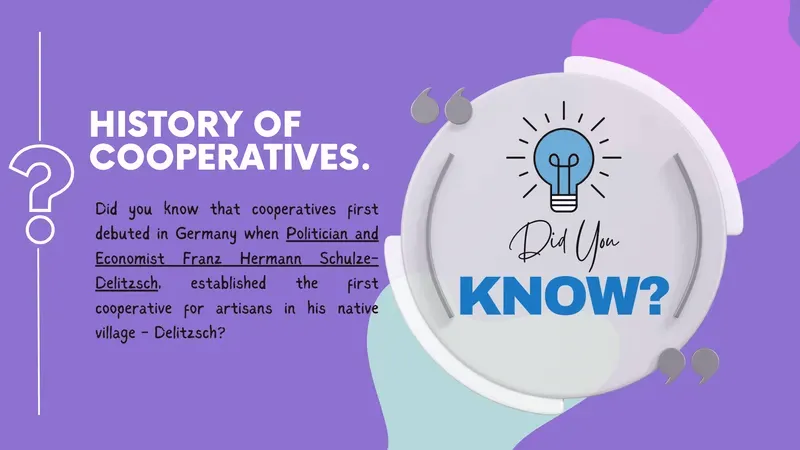Financial Inclusion 2.0: Financial Cooperatives Enabling Inclusivity
Written by Julaire HallAdvocates of Financial Inclusion 2.0 are basing the enhanced version around more inclusive and sustainable financial services for low-income, vulnerable, underserved individuals, communities, and businesses. Financial Cooperatives are Being Viewed as a Viable Pathway for Financial Inclusion 2.0.
Financial Cooperatives have been identified as critical enablers globally when we speak of enabling financial inclusion amongst the marginalized and excluded populace. What we’ve witnessed in the past decade is a growing thrust amongst cooperatives in attempting to bridge the gap for those who have been financially excluded from the traditional financial ecosystem. While significant progress has been attained to date, financial inclusion is still a considerable challenge.
Recently, I had the opportunity to participate in a virtual tour around the world and got an integrated view of the current trends in Leading Digital Money Markets. The 10-week journey was to fulfill my second certificate requirement in becoming a Certified Digital Finance Practitioner. Coincidentally, I spent the last of those weeks in Oaxaca, Mexico learning about the enablers driving change in its financial ecosystem; and the role cooperatives have played and continue to play in building a more inclusive, futuristic, and resilient financial ecosystem; both serving the basis of this blog post.
Financial Cooperatives, be it Credit Unions, Savings and Credit Cooperatives (SACCOs), Rotating Savings and Credit Associations (ROSCAs), or simply cooperatives as known in varying parts of the world, have provided access to financial services for underserved and marginalized communities for decades. Built on the foundation of being user-owned, user-controlled, and user-benefited entities, financial cooperatives are what I would call “banks of the people, for the people, by the people” (pilfering the US Former President, Abraham Lincoln's terminology regarding politics).

Now when we speak of the emergence of financial cooperatives, one thing that stood out to me about its origins and current-day modus operandi is that the overall ideology has not changed; and this is evident among the 3 million cooperatives that are currently servicing 1 billion members globally (International Cooperative Alliance). The focus remains on serving underserved populations and communities, whether it be from specific groups formed around a particular sector or industry, religion, professions, or small and medium-sized businesses in general.
Dating back to its origin, the focus of cooperatives has always been on pooling resources and providing access to resources that benefit all involved. Unlike traditional financial institutions, cooperatives thrive on enabling their members' financial health and not on maximizing profits. Financial Cooperatives serve the needs by bridging the gaps around access, eligibility, perception, financial literacy, and education; and all this is attained by having:
- Local Presence in rural, remote areas where traditional banks are not likely to venture.
- Relaxed Membership Requirements permitting ease of enrolment for low-income individuals.
- Strong Social Bonds that build trust in the ecosystem and the channels available for members to have a voice in the decision-making.
- Diverse Financial Products and Services range from savings, to access to affordable credit and insurance.
- Great Concern for the Community they represent. This has influenced the deployment of various training and education programs to raise community financial literacy levels.
To this end, there’s an increased impetus and growing thrust to expand financial inclusion by leveraging the credit union and cooperative movement so that no one is left behind. There have been some notable financial cooperatives that have prioritized bringing affordable and accessible financial services to underserved communities. The Grameen Bank in Bangladesh dubbed the “bank for the poor” has provided small loans or microcredits to the poor and has helped millions to improve their livelihoods and overcome poverty. There are several Women’s Cooperatives in various villages in the Ivory Coast enabling small-scale cocoa and vegetable producers that seek to improve women’s financial inclusion by bridging the income gap and facilitating good savings habits.
Whilst cooperatives have played a major role in bridging the gap and promoting financial inclusion; there’s an extensive need for technology adoption and integration to enable better servicing and wider reach amongst its clientele. In recent times, we’ve seen some of the world’s largest digital payment providers like Mastercard partnering with the Cooperative Bank of Oromia in Ethiopia connecting farmers and agricultural cooperatives to a digital agriculture marketplace and accessing financial services, even in offline environments. According to Mastercard, this initiative launched in early 2024 has benefitted some 11,000 farmers, 16 farmer cooperatives, and 4 cooperative unions. There is no doubt that technology adoption and upgrades at financial cooperatives can digitize their operating processes, and provide electronic and mobile access to better access and serve the needs of its members; developing and offering new financial services and opportunities to target community segments.
During our team Work Week in Oaxaca recently, we got the opportunity to visit and interact with individuals operating at the microbank and cooperative level. We visited Red Oaxaca (which supports a network of community and microbanks), and, Acreimex (a financial cooperative). At both locations, we got the opportunity to learn about each of the entities and their client profiles. It was such an eye-opening experience getting two varying perspectives where Acreimex, a technologically enabled cooperative, supports individuals, micro, small, and medium enterprises with financial products and services from savings, credit, payment services, remittances, investment, and insurance supported by the availability of ATMs, debit cards, and mobile app. Red Oaxaca represents Indigenous, marginalized, and unbanked people from several microregions providing saving solutions and access to loans for family, agriculture, commerce, and crafts. There was an evident need for the embracement and modernization of processes and technologies to enhance customer experiences, onboard new members and foster the innovation of digital services. From both site visits, some key values remained consistent in the approach: community, solidarity, self-responsibility, and inclusivity, which are key enablers in attaining financial inclusion.

The Mexican Association of Social Sector Credit Unions (AMUCSS) understands the needs of the rural and Indigenous people who have been excluded from the traditional, Mexican financial systems and has identified its People ClearingHouse technology platform, as a critical solution to addressing several financial needs of its members in varying rural communities across Mexico. To learn more about the People’s ClearningHouse and how it seeks to attain Financial Inclusion 2.0 by fostering more inclusive and sustainable access to financial services amongst the Indigenous and rural communities, check out this progress update: https://community.interledger.org/robval/peoples-clearinghouse-progress-grant-report-1-5g9p

Julaire is a highly accomplished project and program management professional with 10+ years of extensive experience in planning, executing, and overseeing the successful delivery of programs in government and the global services sector.